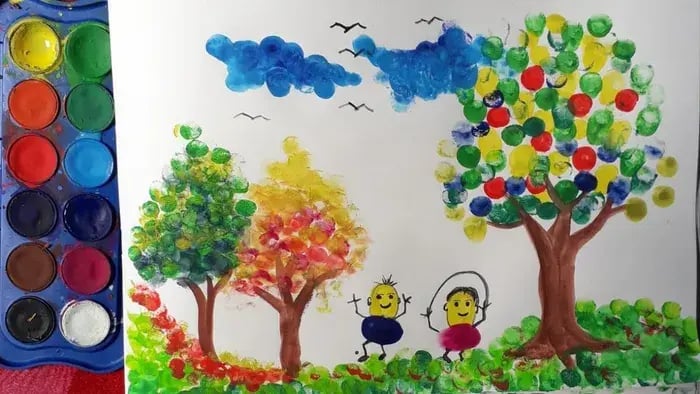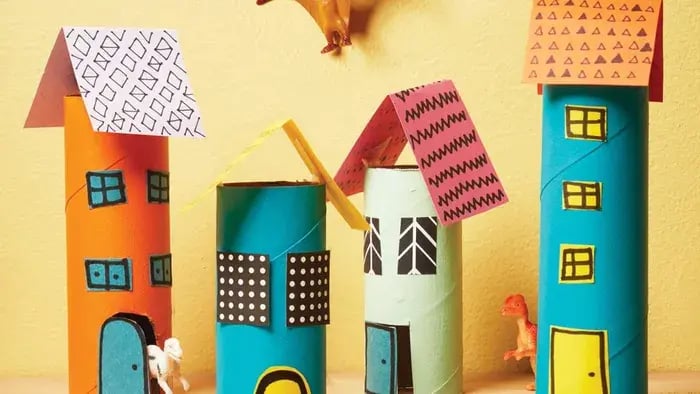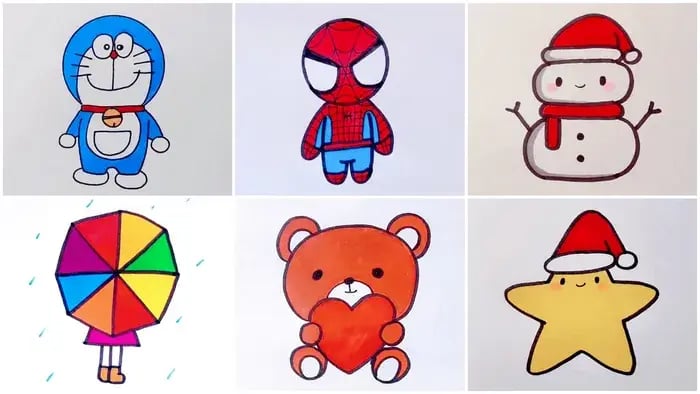- Sponge Painting
- Illustrations
- Bubble Wrap Painting
- Finger Painting
- Recycled Art
- Straw Blowing Art
- Ice Painting
- Shadow Tracing
Introduction
Learning is a continuous process of acquiring new skills, knowledge, and effectively using them in day-to-day life to enhance one's quality of performance. As a child enters preschool, they are exposed to a number of activities that promote creative thinking and push them to become more observant. Out of all these activities, art and craft have a special role to play.
As per a research paper called Developing Children’s Creativity Through the Art of Crafts published in 2022, art and craft activities can help in enhancing the motor skills of a child. Furthermore, the child may also develop a deep understanding about self-expression, emotions, and cultural identity. Other than this, art and craft works can also stimulate a child's cognitive development and help them learn essential skills. This may include the ability to devise multiple solutions to a problem and think more creatively.
Art & Craft Activities for Preschoolers to Learn
Here is a list of some really interesting art and craft activities that preschoolers may try at home or at school.
-
Sponge Painting
Sponge painting is an activity in which a child has to cut small pieces of sponges. Each of these can be in different shapes and sizes. Now the sponges have to be dipped in painting, colors, and simply stamped on a white sheet of paper. Sponges can be great alternatives to painting brushes and also reduce the likelihood of mess. Additionally, it may help a child develop some fine motor skills while making different patterns with a sponge.
-
Illustrations
If your child loves cartoons and is also fascinated by doodling, then this could be the right activity for them. You may give your child a simple cue that can creatively help them design a cartoon illustration of their own. Initially, you may start with something easy and help the child transform their ideas into a tangible form. The child may also borrow inspirations from storybooks, movies, and other creative sources.
-
Bubble Wrap Painting
To do this at home, you would need to give your child a bubble wrap which has to be immersed in painting colors. Now, this bubble wrap has to be very gently pressed by your child on a white sheet of paper. The kid might be fascinated to see the distinct pattern created on the sheet through bubble wraps. It's a great way to make the child understand various textures and encourage them to experiment more with their art activities.
-
Finger Painting

If you really want your child to experience sensory play, then you may make them use their fingers to paint. Finger painting requires the child to dip their fingertips into colors and then strategically imprint them on the paper to make various designs, designs and impressions. It may also help a child understand how they can actively use their fingers to create new painting ideas while also enhancing their motor skills.
-
Recycled Art

To make the best use of waste material kept at home and simultaneously engage your child in a creative activity, you may use recycled materials. This includes leftover cartons, bottles, bottles caps, tubes, and cardboard boxes. Each of the items can be used to make small robots, cars, and animals. It may also make your child understand the importance of sustainability and making the best use of the available resources.
-
Straw Blowing Art
Straw blowing is an activity in which your child will have to use straws to create patterns on a drawing sheet with watercolors. The process begins with pouring some diluted watercolor on a sheet. Now, the next step is to use this straw and gently blow air into it to distribute the diluted paint into different corners of the sheet. This will help the child design some abstract painting and they may control the flow of the colors with their blow.
-
Ice Painting
In this highly engaging activity, a child gets an extremely sensory rich experience while exploring different colors. For pre-preparation, parents have to make ice popsicles with water and paint colors. The mixture has to be transferred into ice cube molds, and one has to add ice cream sticks to each of these sections. Once the colored popsicles are ready, parents may give this to the child. The child can paint using these popsicles by holding them from the stick. The activity is a solid combination of fun and creative learning.
-
Shadow Tracing
This activity can make your child truly understand dimensions, shapes, and how a shadow is formed. Parents can simply keep an object in front of a child. Now in front of this object, parents may put a flashlight on so that a shadow is cast just behind the object. The child may then simply keep their drawing sheet exactly where the shadow is formed and trace the shadow to draw the object. Though it is a creative activity, it may also teach a child some valuable scientific and mathematical concepts.
Conclusion

All of these activities are engaging, fun, and highly experiential. These activities may truly allow the child to creatively express themselves while also learning new skills and working on their creativity.
Pakhi’s deep interest in writing is influenced by her love for cinema and fiction books. Being a literature graduate, she is relentlessly inspired by different storytelling techniques to craft her work and bring a fresh perspective to the table. Having studied psychology, she also loves to explore various psychological insights related to kids’ and parents’ behavior to create engaging content pieces. Apart from that, she enjoys jamming to some great R&B music in her leisure time.
The views expressed are that of the expert alone.
The information provided in this content is for informational purposes only and should not be considered a substitute for professional medical advice, diagnosis, or treatment. Always seek the advice of your physician or another qualified healthcare provider before making any significant changes to your diet, exercise, or medication routines.










